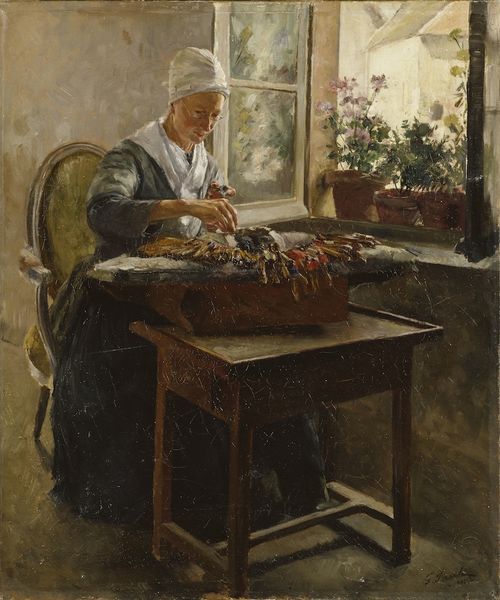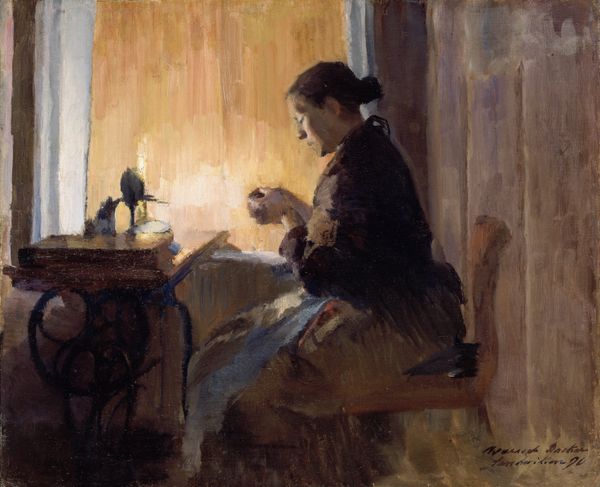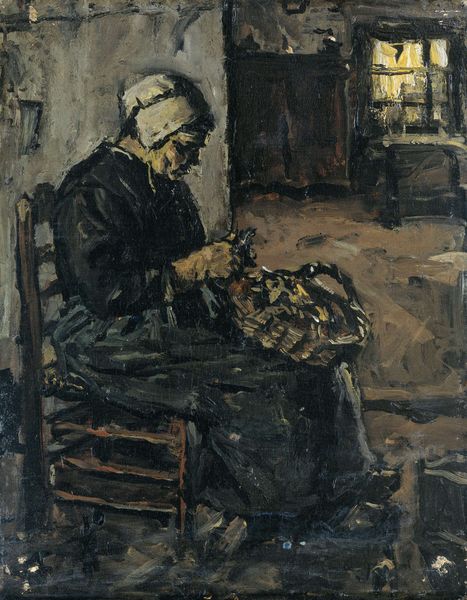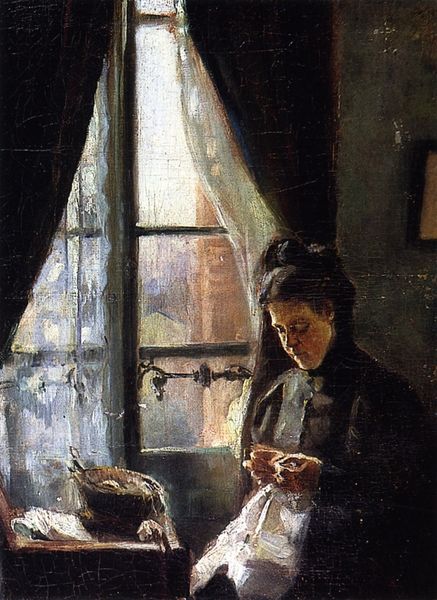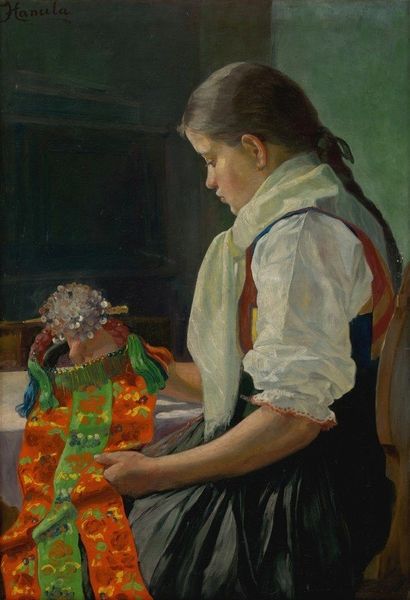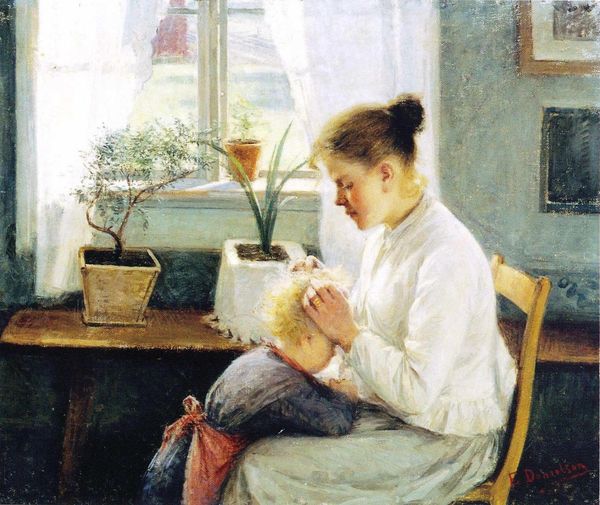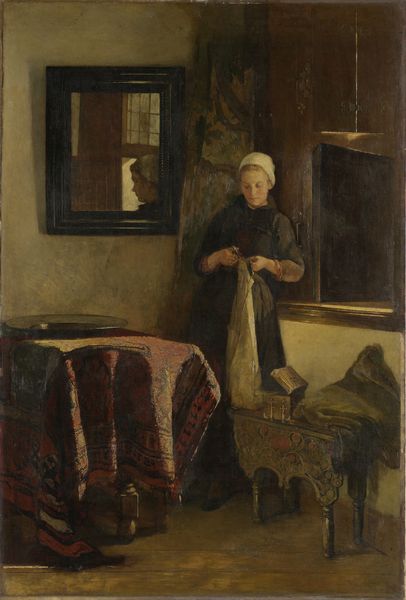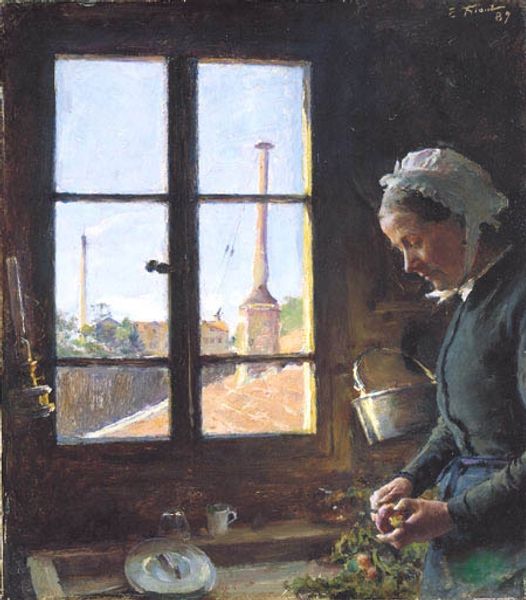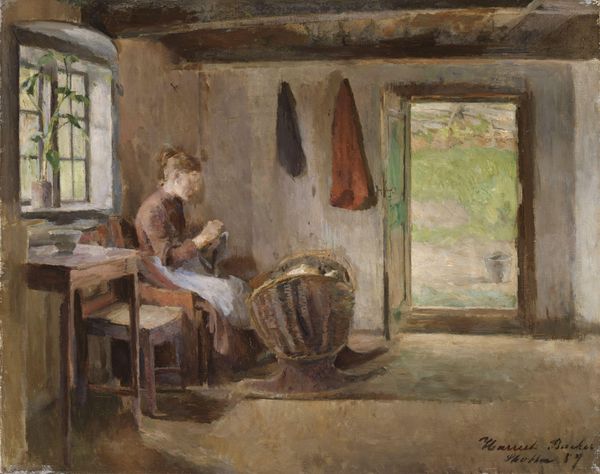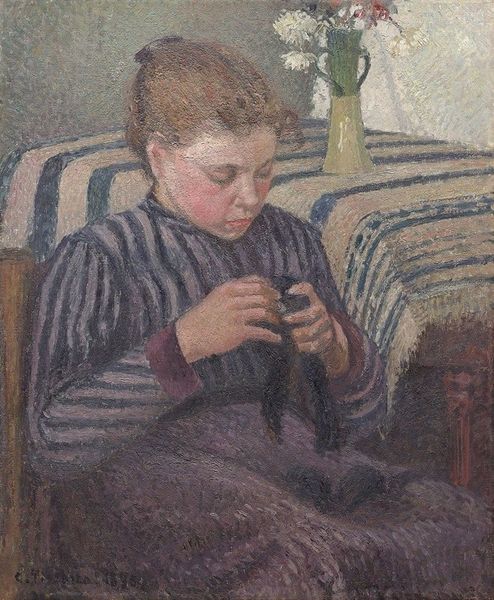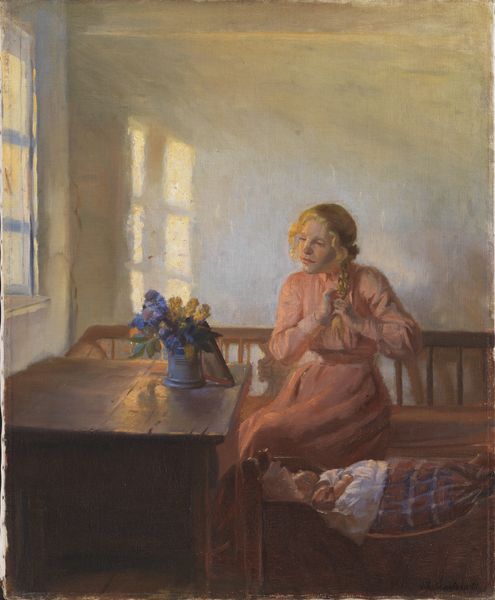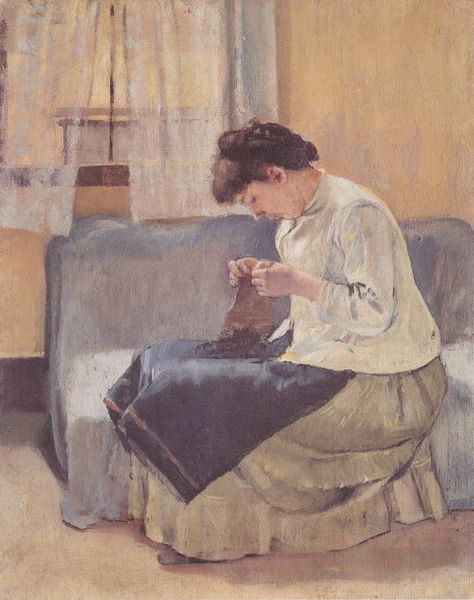
Dimensions: 59 x 48 cm
Copyright: Public domain
Editor: So, here we have "Sewing Fisherman's Wife" by Anna Ancher, painted around 1890. It seems like a quiet, domestic scene, almost serene. There's a real sense of focus on this woman and her work. How do you interpret this work? Curator: This painting provides an intimate view into the lives of women in Skagen, Denmark at the end of the 19th century. It isn't just a serene scene, but a commentary on the unseen labor that upheld the fishing community. Ancher highlights the essential, yet often invisible, contributions of women like this wife mending nets or clothes – tasks vital to the survival and economy of their community. What does her posture and expression convey to you? Editor: She looks really concentrated, like the sewing is important, more than just a chore. Maybe there’s a story in the texture of the cloth, or the precision of the stitches. Curator: Exactly! Ancher uses a realistic style to elevate the mundane, creating a narrative about the dignity of labor and the quiet strength of women in a patriarchal society. Consider also the interplay of light and shadow – it suggests not just the setting, but perhaps also alludes to the shifting fortunes and precariousness of a fisherman's life and those who depend on him. How does this change your understanding of the painting? Editor: I hadn’t considered that contrast, the light and dark as symbolizing risk, it definitely makes me think about the broader societal implications within such a seemingly simple snapshot. Curator: Yes, Ancher encourages us to think beyond the surface. It's not just a pretty picture. It's a social commentary subtly woven into a domestic scene, offering a critical view on the role and recognition of women's work. Editor: I now see the power of her focused gaze; this artwork unveils how historical documentation situates an intimate family role to comment on how women navigated harsh times.
Comments
No comments
Be the first to comment and join the conversation on the ultimate creative platform.
